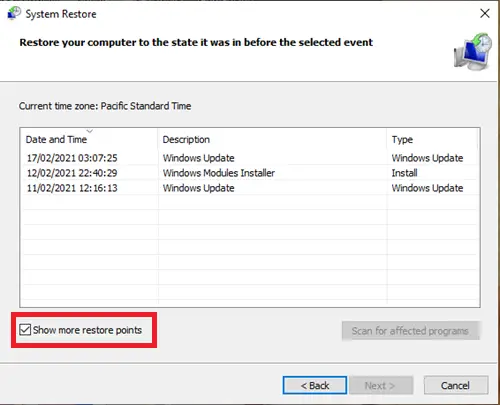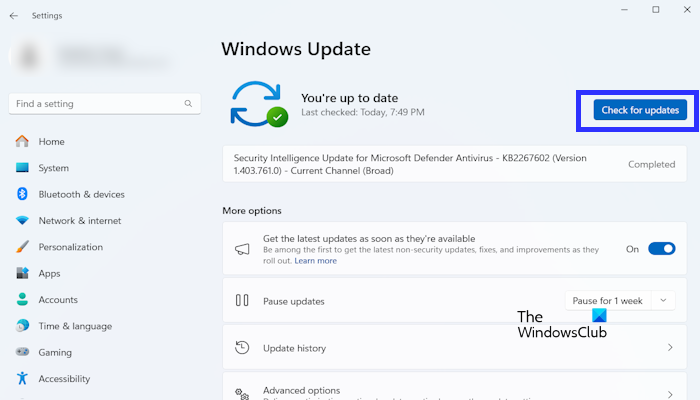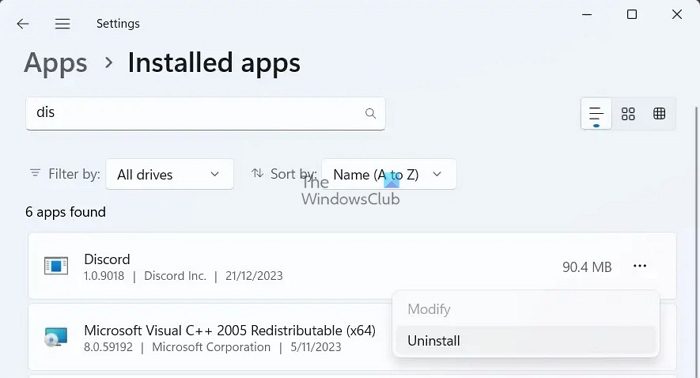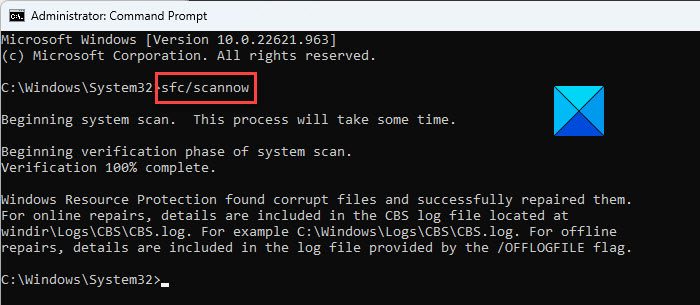If you encounter Windows.applicationmodel.store.dll error on your Windows 11/10 PC, read this post to learn how to fix the issue. Windows.applicationmodel.store.dll is a Dynamic Link Library (DLL) file, primarily associated with the Microsoft Store. It provides functions and APIs to manage purchases, downloads, and app updates from the Store and helps integrate Store functionalities with the rest of the operating system.

If Windows.applicationmodel.store.dll goes missing or corrupted, you might encounter errors while opening the Microsoft Store or the apps that depend on it. These error messages may include the following phrases:
Cannot find C:\Windows\SysWOW64\Windows.ApplicationModel.Store.dll
Cannot start {app_name}. A required component is missing: Windows.ApplicationModel.Store.dll. Please install {app_name} again.
Failed to load Windows.ApplicationModel.Store.dll.
What causes Windows.applicationmodel.store.dll error?
The error can occur for several reasons, including intentionally or inadvertently deleting or misplacing the Windows.ApplicationModel.Store.dll file, malware infections that corrupt or remove system files, or registry issues with erroneous or invalid entries.
Fix Windows.applicationmodel.store.dll error
To fix Windows.applicationmodel.store.dll error on Windows 11/10, follow these troubleshooting steps:
- Use System Restore
- Update Windows
- Update/Reinstall the app
- Run SFC or DISM scan
- Re-register the DLL file
- Download and replace the DLL file
Let us see this in detail.
1] Use System Restore

Restore points are generated when you install a new app or driver, or when you create a restore point manually. Check if you have restore points available and try performing a system restore, choosing a date before the occurrence of the issue, or when the system was working fine. This will revert your system to a previous state, potentially resolving the DLL issue.
Press Win + R, type ‘rstrui‘ in the Run dialogue, and press Enter. Click Next in the System Restore wizard. Available restore points will show up. If you don’t see the restore point you want to use, select the ‘Show more restore points‘ check box.
Select the desired restore point in the list of results and click Next to proceed. Follow the on-screen instructions to complete the restoration.
2] Update Windows

Windows Updates often include patches and fixes for system files, including DLLs. These updates can replace corrupted or missing DLLs with their fresh versions, potentially resolving compatibility issues that might be causing the error.
To update Windows, open Settings by pressing Win + I, then select Windows Update from the left menu. Click Check for updates to see if any updates are available. If updates are found, download and install them. Then reboot your PC and see if the error is gone.
3] Update/Reinstall the app

If the error occurs when running a specific app, try updating or reinstalling that app. Even though the DLL is linked to the Microsoft Store, apps dependent on it can still be affected when there are issues with the file. App updates may include patches that address known issues, including those related to missing or incompatible DLLs. Reinstalling the app reinstalls all its components, including any DLLs it depends on.
To update the app, open the Microsoft Store, click Library in the bottom-left corner, find the app, and click the Update icon next to the app.
To reinstall the app, go to Settings > Apps > Installed apps. Click the three-dots icon next to the app’s name and select Uninstall. Then reinstall the app via the Microsoft Store or download the installer from its official website.
4] Run SFC or DISM scan

Next, try running the SFC or DISM scan.
The SFC scan checks for and repairs missing or corrupted system files by replacing them with the correct versions from the Windows cache. The DISM scan repairs the system image to resolve deeper issues that SFC might not fix. Both scans help fix missing or corrupted system files, including DLLs.
To run an SFC scan, open Command Prompt as an administrator, type sfc /scannow, and press Enter.
For a DISM scan, type DISM /Online /Cleanup-Image /RestoreHealth.
5] Re-register the DLL file

While updating or reinstalling an app usually registers the necessary DLLs automatically, sometimes the registration might fail or get corrupted. Manually re-registering the DLL ensures that Windows knows where the DLL is located and how to use it, resolving potential DLL errors.
Open Command Prompt as administrator and execute the following command in the Command Prompt window:
regsvr32 /u Windows.applicationmodel.store.dll
The above command will unregister the DLL. To re-register the DLL file, execute the following command:
regsvr32 Windows.applicationmodel.store.dll
You should see a confirmation message saying that the DLL was successfully registered.
6] Download and replace the DLL file
As a last resort, you can try a more aggressive approach (not recommended for amateur users) by downloading the appropriate Windows.ApplicationModel.Store.dll file version that matches your Windows version and architecture (32-bit or 64-bit) and replacing it with the current DLL.
After replacing the DLL, re-register it using the regsvr32 command to ensure it’s properly integrated with the system.
Note:
- Only download DLL files from reputable sources. Downloading from unreliable websites can risk introducing malware or faulty files into your system.
- If the DLL file is present but corrupted, make a backup before replacing it. This way, you can restore it if the replacement causes issues.
If none of the above solutions work, you may be required to perform a clean installation of Windows to resolve the Windows.applicationmodel.store.dll error on your Windows 11/10 PC.
I hope this helps!
Read: Fix Ucrtbase.dll was not found or missing error on Windows PC.
Can I delete Windows.applicationmodel.store.dll file?
Deleting Windows.applicationmodel.store.dll is not recommened. It is an essential system file that plays a critical role in the functioning of the Microsoft Store and the applications that rely on it. Deleting this file may cause serious issues, such as app malfunction, system instability, and inability to access the Store itself. Even if advised by a professional, it is better to repair or replace the file than to remove it permanently.
Are DLL files important?
Yes, DDL files contain a variety of functions, procedures, and resources that apps call upon to perform tasks that are crucial for the smooth functioning of the Windows operating system and apps themselves. These files are created to allow multiple programs to share the same code, saving valuable memory and system resources. Deleting, replacing, or modifying DLL files should be done with caution, as it can have a serious impact on system stability and performance.
Read Next: Fix api-ms-win-crt-runtime-l1-1-0.dll or api-ms-win-crt-heap-l1-1-0.dll is missing errors.